
When choosing diamond jewelry, the diamond itself is the centerpiece. But did you know that the cut and shape add to the beauty and uniqueness of the diamond?
Understanding what the different diamond cuts are and the variety of shapes can help to ensure that the best accessory is chosen.
First, it’s important to point out that although the terms “cut” and “shape” are often used interchangeably in discussions of diamonds, the terms are not the same.
The type of diamond cuts refers to the way that the raw diamond is literally cut to make facets, which are the flat faces on the surface of the diamond. A diamond cut — and its facets — are responsible for what’s known as the “face up” appearance of the diamond.
Perhaps the most common diamond cut is the brilliant cut, originally developed in 1919 to maximize a diamond’s brilliance, the result of the diamonds internal and external reflections of white light. There are many different types of diamonds cuts, including antique brilliant cuts, rose cut, and step cuts.
A diamond’s shape refers to the outline of the diamond, meaning the shape of the diamond from an overhead view.
This diamond shape guide explores the different shapes that are widely available in fine jewelry, including classic shapes like round, oval, princess, emerald, and pear. Or more unique cuts like cushion, Asscher, or radiant diamonds.
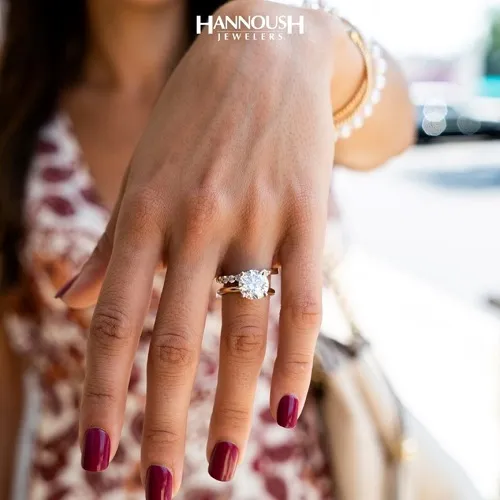
However, a round diamond does not have the maximum surface area for its size, so if the face size and overall appearance of size are the most important features, a different shape may be a better choice.
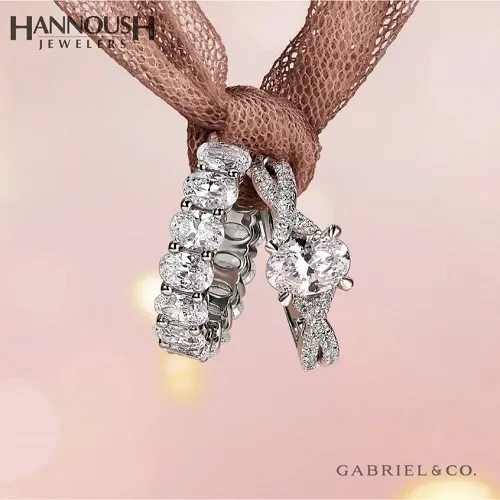
The rounded corners of the cushion style make it durable while maintaining a high level of brilliance and fire. These diamonds reflect lots of white light and disperse light into all the colors of the rainbow.
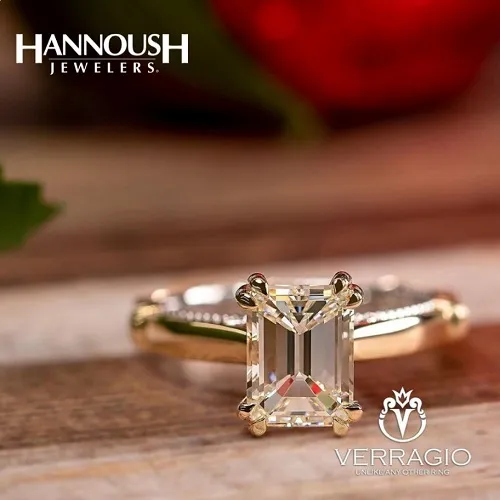
The long shape of an emerald shaped diamond has an elegant and understated look that emphasizes the clarity of the stone that is used. The long lines of the emerald cut can also make a stone look a bit bigger.
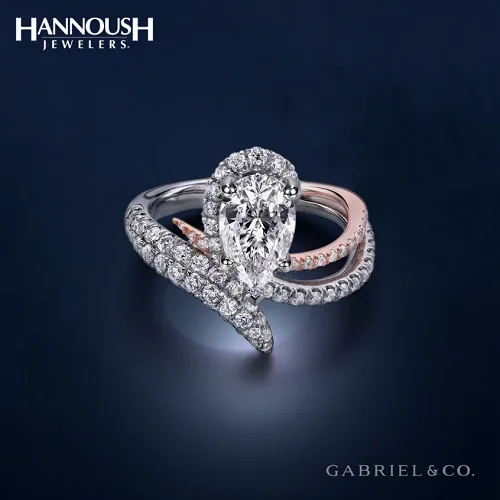
Taking the traditional round brilliant cut and squaring the edges, a princess diamond offers a ton of brilliance and sparkle along with an eye-catching shape, no matter what the setting.
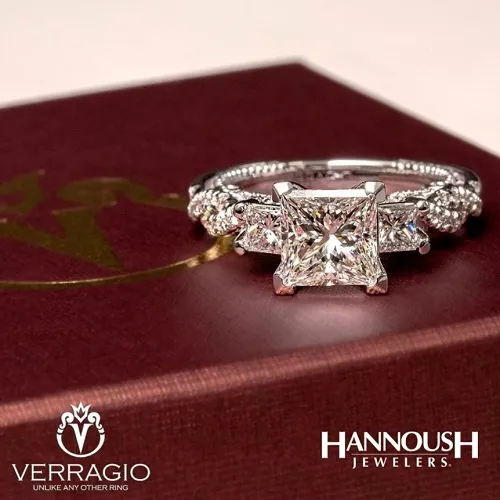
A marquise diamond is pointed on both ends and has a full 15% more face area than a round diamond of the same size. The long shape of a marquise diamond also means it can help fingers look longer and slimmer if that is important to the wearer.

Put simply, there is no mistaking the special message of a heart shaped diamond.
The experienced and helpful staff at Hannoush Jewelers can show you diamonds of all sizes and shapes while helping you pick out that one that perfectly suits your style, whether you are shopping for yourself, your partner, or a special loved one.
Visit one of our showrooms in the Capital District or shop online to find the perfect diamond.
Understanding what the different diamond cuts are and the variety of shapes can help to ensure that the best accessory is chosen.
First, it’s important to point out that although the terms “cut” and “shape” are often used interchangeably in discussions of diamonds, the terms are not the same.
The type of diamond cuts refers to the way that the raw diamond is literally cut to make facets, which are the flat faces on the surface of the diamond. A diamond cut — and its facets — are responsible for what’s known as the “face up” appearance of the diamond.
Perhaps the most common diamond cut is the brilliant cut, originally developed in 1919 to maximize a diamond’s brilliance, the result of the diamonds internal and external reflections of white light. There are many different types of diamonds cuts, including antique brilliant cuts, rose cut, and step cuts.
A diamond’s shape refers to the outline of the diamond, meaning the shape of the diamond from an overhead view.
This diamond shape guide explores the different shapes that are widely available in fine jewelry, including classic shapes like round, oval, princess, emerald, and pear. Or more unique cuts like cushion, Asscher, or radiant diamonds.
Types of Diamond Shapes
There is no right or wrong choice when it comes to selecting the diamond shape for a particular piece of jewelry. Each shape has its own benefits and its own fan base. While knowing the different shapes available can be helpful when shopping, the best shape for someone can be a personal preferenceRound
With 57 or 58 facets, the round diamond shape is the traditional brilliant cut and the easiest diamond shape to find, by far.
However, a round diamond does not have the maximum surface area for its size, so if the face size and overall appearance of size are the most important features, a different shape may be a better choice.
Oval
An oval diamond is a variation on the round diamond shape. It will have similar brilliance to a round stone of the same size, but the shape is less common, making it popular with those who want to stand out. Some of the most fashionable celebrities boast oval diamonds in their engagement rings, including Blake Lively, Penelope Cruz, and Serena Williams.
Cushion
The cushion diamond has its origins in the 1700s, as it is a more modern interpretation of the old mine cut shape. The contemporary cushion shape is square with rounded corners and 58 facets. Although it may not be as common as a round diamond, some of the most famous diamonds in the world are in the cushion shape, including the Hope Diamond.The rounded corners of the cushion style make it durable while maintaining a high level of brilliance and fire. These diamonds reflect lots of white light and disperse light into all the colors of the rainbow.
Emerald
Emerald shaped diamonds are quite unique. The emerald shape is not a brilliant cut, which would have facets placed at angles in a cone-like shape, but rather a step cut with a long, parallel stair step design and clipped corners.
The long shape of an emerald shaped diamond has an elegant and understated look that emphasizes the clarity of the stone that is used. The long lines of the emerald cut can also make a stone look a bit bigger.
Pear
Pear shaped diamonds are rounded on one end and come to a point at the other. A diamond with a pear shape tends to offer 8% more face area than a diamond of the same size in a round shape. For many people, that’s an attractive proposition.
Princess
After the round diamond, princess shaped diamonds are some of the most popular to adorn classic pieces of jewelry.Taking the traditional round brilliant cut and squaring the edges, a princess diamond offers a ton of brilliance and sparkle along with an eye-catching shape, no matter what the setting.

Asscher
The Asscher diamond shape was developed in the early 1900s by Joseph Asscher and first rose to prominence during the Art Deco era. An Asscher diamond may also be referred to as a square emerald diamond because it also uses a step-down facet design, but the shape is square rather than rectangular. Like cushion and princess diamonds, the Asscher can appear bigger than a round diamond of the same size due to its corner-to-corner measurement.Radiant
First created in the 1970s, the radiant shape for diamonds is one of the more modern options. The radiant diamond is a bit of a cross between an emerald shape and the traditional round brilliant cut. It has a shape very similar to the emerald, but the facets are more like the brilliant cut rather than a step cut, giving it more sparkle than an emerald-shaped diamond of the same size. Radiant diamonds may be either square or rectangular and make excellent stones for engagement rings.Marquise
The marquise diamond shape was created by a jeweler paid by Louis XIV tasked to create a unique cut to compare to his mistress' lips name Marquise de Pompadour.A marquise diamond is pointed on both ends and has a full 15% more face area than a round diamond of the same size. The long shape of a marquise diamond also means it can help fingers look longer and slimmer if that is important to the wearer.

Heart
A true nod to the romantic nature of diamond jewelry, a heart shaped diamond is a classic gift between lovers. This diamond truly looks like a valentine in diamond form. Heart shape diamonds are also very rare because of how difficult it is to cut, and because it requires a larger stone to create the shape.Put simply, there is no mistaking the special message of a heart shaped diamond.
Find Your Ideal Diamond at Hannoush Jewelers
You don’t have to be an expert in diamond shapes and cuts to start shopping for the perfect piece of diamond jewelry.The experienced and helpful staff at Hannoush Jewelers can show you diamonds of all sizes and shapes while helping you pick out that one that perfectly suits your style, whether you are shopping for yourself, your partner, or a special loved one.
Visit one of our showrooms in the Capital District or shop online to find the perfect diamond.
